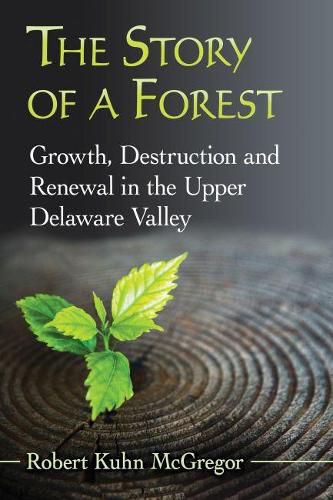Readings Newsletter
Become a Readings Member to make your shopping experience even easier.
Sign in or sign up for free!
You’re not far away from qualifying for FREE standard shipping within Australia
You’ve qualified for FREE standard shipping within Australia
The cart is loading…






This title is printed to order. This book may have been self-published. If so, we cannot guarantee the quality of the content. In the main most books will have gone through the editing process however some may not. We therefore suggest that you be aware of this before ordering this book. If in doubt check either the author or publisher’s details as we are unable to accept any returns unless they are faulty. Please contact us if you have any questions.
The re-established forests of the Upper Delaware are a living reminder of centuries of both exploitation and good intentions. Emerging after the last glaciation, they were first modified by Native Americans to promote hunting and limited agriculture. The forests began to disappear as European settlers clear-cut farmland and fed sawmills and tanneries. The advent of the railroad accelerated demand and within 30 years industry consumed virtually every mature tree in the valley, leaving barren hillsides subject to erosion and flooding. As unchecked cutting continued, conservation efforts began to save what little remained.
A century and a half later, a forest for the 21st century has emerged-an ecological patchwork protected by a web of governmental agencies, yet still subject to danger from humans.
$9.00 standard shipping within Australia
FREE standard shipping within Australia for orders over $100.00
Express & International shipping calculated at checkout
This title is printed to order. This book may have been self-published. If so, we cannot guarantee the quality of the content. In the main most books will have gone through the editing process however some may not. We therefore suggest that you be aware of this before ordering this book. If in doubt check either the author or publisher’s details as we are unable to accept any returns unless they are faulty. Please contact us if you have any questions.
The re-established forests of the Upper Delaware are a living reminder of centuries of both exploitation and good intentions. Emerging after the last glaciation, they were first modified by Native Americans to promote hunting and limited agriculture. The forests began to disappear as European settlers clear-cut farmland and fed sawmills and tanneries. The advent of the railroad accelerated demand and within 30 years industry consumed virtually every mature tree in the valley, leaving barren hillsides subject to erosion and flooding. As unchecked cutting continued, conservation efforts began to save what little remained.
A century and a half later, a forest for the 21st century has emerged-an ecological patchwork protected by a web of governmental agencies, yet still subject to danger from humans.